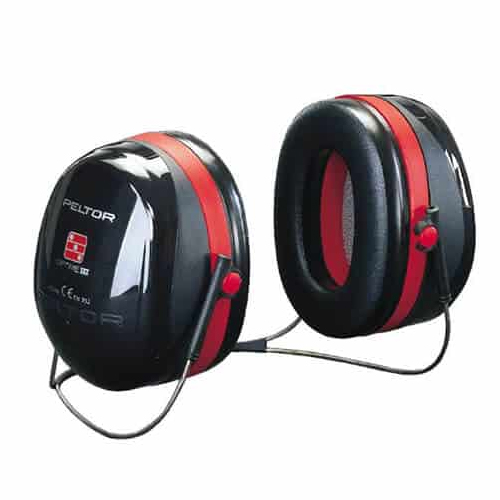No products in the basket.
Ear Protection, PPE
EN 352 Hearing Protection – What Should I Choose?
EN 352 Hearing protection – what should I choose?
Hearing protection is another vital piece of PPE equipment required across multiple key industries including construction, engineering, manufacturing, rail and utilities. Understanding the EN 352 hearing protection safety standard and, in turn, which type of hearing protection you need can feel like a daunting prospect. Clad Safety have been a trusted PPE supplier for over 30 years, so we have put together this useful guide to simplify both EN 352 and the hearing protection available to use.
What is EN 352?
EN 352 is the European hearing protection safety standard. Did you know that a large number of employees are exposed to excessive levels of noise in their workplace? This can then result in many individuals suffering work-related hearing loss, tinnitus and other ear-related medical conditions, which can have a permanent effect on their quality of life.
The Control of Noise at Work Regulations aims to ensure that all workers’ hearing is protected from excessive noise at their place of work. All hearing protection provided by an employer must be fit-for-purpose, meet the requirements of The Control of Noise at Work Regulations 2005 and be compliant with the EN 352 safety standard.
Remember the number at the end of EN 352!
There is a number that is often specified alongside the EN 352 standard, and this shows the hearing protection type. Please note – it is not a score for the protection levels.
EN 352-1 – earmuffs
EN 352-2 – ear plugs and ear moulds
EN 352-3 – variants such as earmuffs attached to industrial safety helmets
EN 352-4 – level-dependent earmuffs
EN 352-5 – active noise-reduction earmuffs
EN 352-6 – hearing protection with electrical audio input
What does SNR mean?
SNR means Simplified Noise Reduction or Single Number Rating. The SNR rating on all ear protection will show how much noise reduction ear plugs and earmuffs provide.
The SNR score is calculated based on the average noise reduction of varying high and low frequencies. The higher the number, the more sound the hearing protection will block. Ear defenders such as the InterEX™ Mounted Ear Defenders have an SNR score of 29 and therefore attenuates the sound by 29 decibels (dB). By using this hearing protection, the sound that reaches your ears will be 29 dB quieter.
What is dB(A)?
dB(A) is the unit for the sound pressure level attuned to the sensitivity of the human ear. dB(A) is used for noise measurements as the sensitivity of the human ear is not the same for all sound frequencies.
How to decide on protection levels?
If an employee needs to raise their voice to be heard a few feet away, then the noise levels may be over 85 dB and immediate action should be taken. SNR is the simplest way of getting a general indication for the level of protection provided. In very simple terms the calculation would be:
(dB = Decibel level)
Noise Level 100 dB
Hearing Protector SNR – 30 dB
Noise Reaching Ear = 70 dB

When is hearing protection needed?
The Control of Noise at Work Regulations states that the exposure level at which employers need to provide hearing protection is a daily or weekly personal noise exposure of 85 dB (decibels). Those who are working in noise levels between 80 dB (lower action level) and 85 dB must be provided with suitable hearing protection on request. Where noise levels reach or exceed 85 dB (upper action level), suitable hearing protection must be supplied and worn.
The exposure limit is 87 dB; this figure takes into account any reduction in exposure provided by hearing protection. Workers must not be exposed to noise levels exceeding 87 dB, whether they are wearing ear protection or not.
Do I need earmuffs or ear defenders?
Earmuffs and ear defenders are the same thing and can either be worn with a head band or clipped on to a helmet. They consist of two ear cups that are filled with sound absorbing foam and each cup has a soft pad that is either foam or foam and liquid filled. They must be tested in accordance with EN 352-1:2002 must be labelled with the standard number, manufacturer, and model identification. Where required, there should also be indication for the orientation of the earmuff e.g. “top” and/or “left” and “right.” There must be enough rotation on each earmuff to ensure the wearers can adjust the device to achieve the best fit and no excessive force or pressure on the wearer’s head.
Do I need disposable, corded or reusable ear plugs?
Disposable, corded and reusable ear plugs all have their own benefits and merits. EN 352-2 specifies the constructional, design, performance and marking requirements for compliant ear plugs. All ear plugs should also state whether they are disposable or reusable, have fitting instructions, include the nominal size of formable plugs (ranging from 5-14mm), and custom moulded ear plugs should indicate “left” and “right.”
There are a few differences to testing methods in EN 352-2. Moulded ear plugs are not tested for sizing and adjustability, and the method of cleaning and disinfection specified for reusable ear plugs is assessed to ensure it causes no significant alteration to the acoustic performance, material and construction properties.
Choosing whether to wear disposable, corded or reusable ear plugs is a personal choice. Disposable ear plugs can be bought in bulk and fitted to a wall dispenser allowing all employees and site visitors easy access to hearing protection. Corded ear plugs allow the wearer to keep their ear plugs to hand and reduces the possibility of their hearing protection being misplaced. Meanwhile, reusable ear plugs are a more sustainable option as they can be worn multiple times. As mentioned above, they must be cleaned correctly to avoid affecting the validity of their conformity to EN 352-2.
Remember, hearing protection is covered by EN 352 and the associated standards. Employers must carry out the appropriate risk assessment in compliance with the Noise at Work Regulations. Clad Safety are a trusted supplier of Workwear and PPE – please get in touch if you have any questions surrounding EN 352 and the hearing protection you require for you and your team.
















